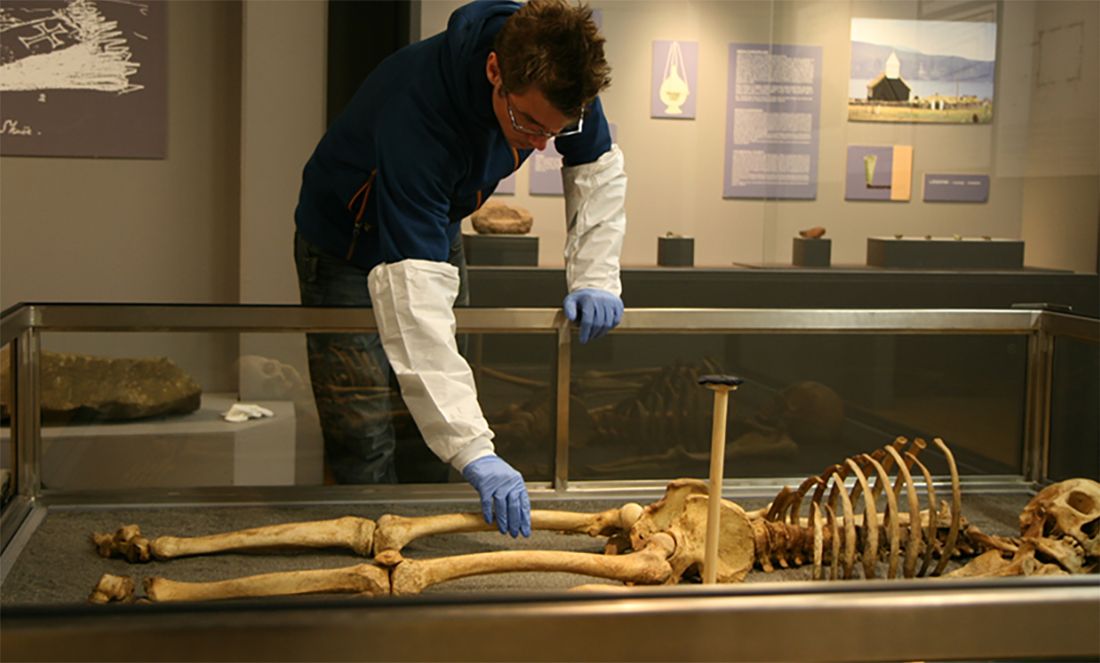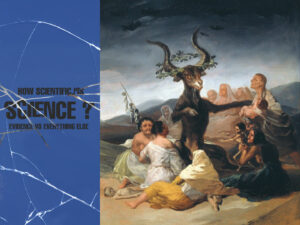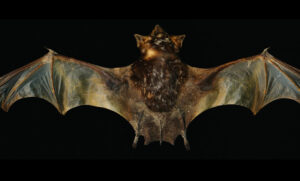If police procedural crime shows have taught us anything, it’s how DNA can provide answers to tricky questions. Wondering who used the candlestick on Colonel Mustard in the library? DNA can solve the mystery – better luck next time, Mrs Peacock.
But can DNA help solve mysteries that happened a little longer ago?
The new and exciting field of ancient DNA is revealing some startling things – from how Vikings migrated across Europe to the evolution of Australian native animals.
Right at the heart of things is Professor Morten Allentoft. Morten was recently recruited to lead a world-class lab at Curtin University – although because of the COVID-19 pandemic, he is currently still running the lab remotely from his hometown of Copenhagen, Denmark.
Old bones
So what is ancient DNA? Basically, what it sounds like: old DNA molecules.
“Ancient DNA is a general term used for degraded DNA from an organism that could be hundreds or thousands of years old,” says Morten. “We don’t have a clear definition of when a DNA molecule becomes ‘ancient’.”
While the DNA molecule was first discovered in a Cambridge University lab in 1953, it was only in the early 1990s that the study of ancient DNA really took off.

In a study published in September 2020 in Nature, Morten and his team in Denmark studied and analysed more than 400 Viking skeletons from archaeological sites across Europe and Greenland, revealing unknown genetic connections between Southern European and Asian populations that mixed with the Vikings.
But now, Morten wants to use ancient DNA to uncover the mysteries of Australian biodiversity.
“I’m very interested in the basic evolutionary questions of how a species evolves in its environment,” says Morten. “Ancient DNA is a wonderful tool to understand this.”
“If you only use modern DNA when studying the past, you have to create analytical models that extrapolate information back through time. But with ancient DNA, you have a definite view of what a gene looked like at that particular point in the past.”
For Morten, Australia is a particularly interesting place to study ancient DNA.
“The continent of Australia has been isolated for so long and has so many unique endemic species. I want to use both ancient and modern DNA in combination to understand how Australian species evolved.”
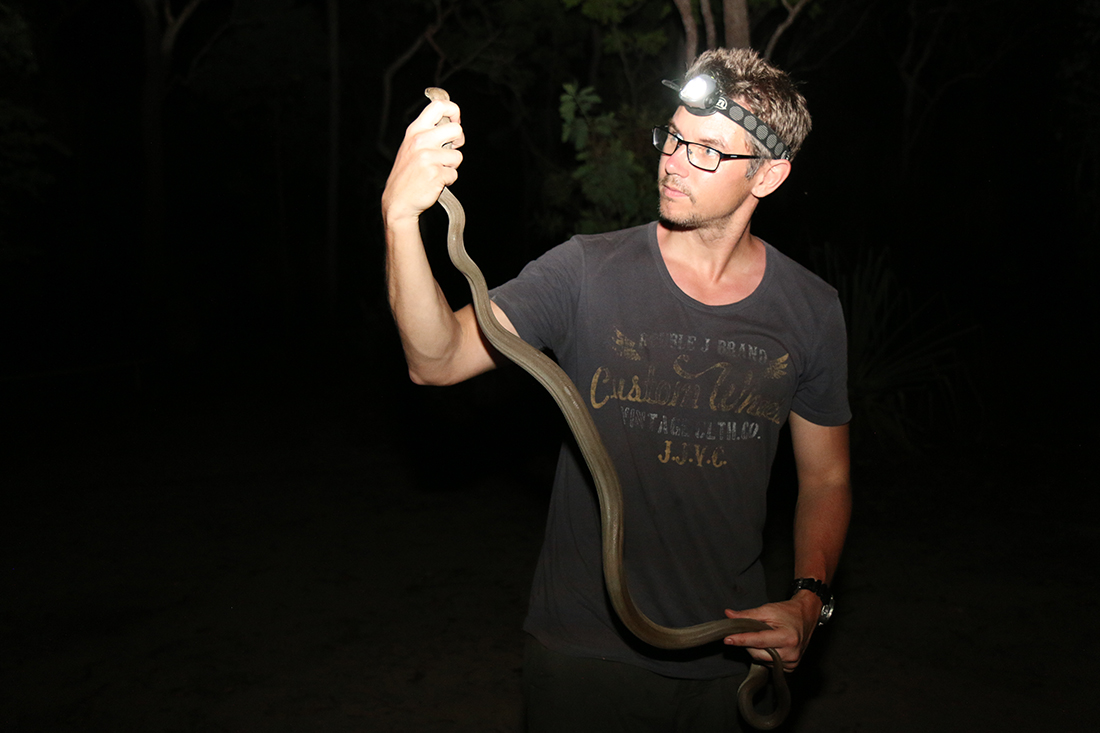
Life … finds a way
And yes, we wanted to know whether ancient DNA was the same principle behind the cloned dinosaurs in Jurassic Park. Unfortunately, in the interest of scientific accuracy, Morten delivered a hard truth.
“That’s a good example of something that will never work,” says Morten. “The oldest authentic DNA we’ve discovered is 700,000 years old.”
“When the cell dies, the DNA degrades too fast for us to find dinosaur DNA. But as technology develops, we may learn to push that barrier back to about a million years.”
Given that Tyrannosaurus rex lived about 66–68 million years ago, that blows a Brachiosaurus-sized hole in Jurassic Park’s central premise.
But the inaccurate science wasn’t a total invention of Jurassic Park author Michael Crichton. In the 1990s, the study of ancient DNA saw a few embarrassing bungles.
“In these early days, people published studies in prominent journals claiming they had discovered dinosaur DNA, which inspired the film and novel Jurassic Park. But this all turned out to be a result of DNA contamination.”
“When people reanalysed these DNA sequences, they realised they had DNA from a chicken or human.”
These mistakes almost derailed ancient DNA as an analytical tool. But now, scientists are far better at handling samples and preventing contamination.
All natural, no preservatives
But the issues don’t just stop with contamination.
“DNA degrades faster or slower depending on preservation conditions,” says Morten. “One of the most important factors determining if DNA is preserved for a long time is the temperature. This is why we normally find the oldest samples of DNA in permafrozen conditions like Siberia or Alaska.”
But you don’t need to be a climate expert to know that Australia doesn’t have a lot of ice lying around. Given the arid Australian environment, how can Morten hope to even find usable samples?
“In Australia, it’s harder to get ancient DNA from samples that are 500 years old than getting DNA from 20,000- year-old samples in colder climates.”
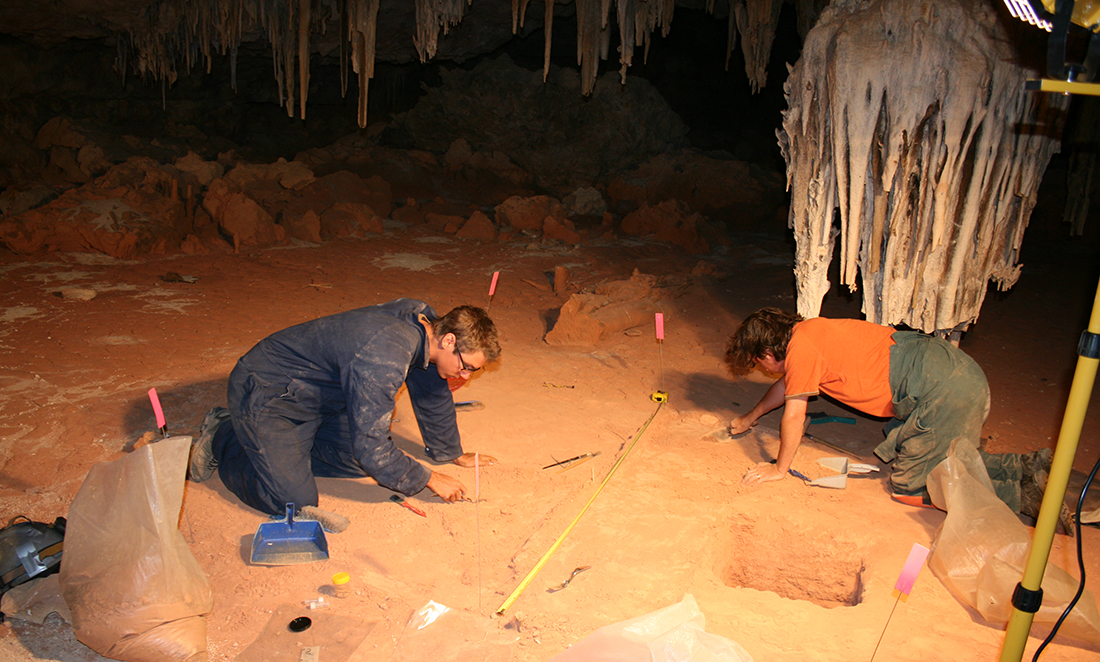
“But we can get samples from environments that are colder and more stable, like caves. And in recent years, we have also become much better at identifying exactly which skeletal elements that are best at preserving DNA, so we can target those in our sampling.”
We can’t wait to see what mysteries DNA could solve about how Australian biodiversity has developed in the past, how it responded to changes and what we do to safeguard it in the future.



